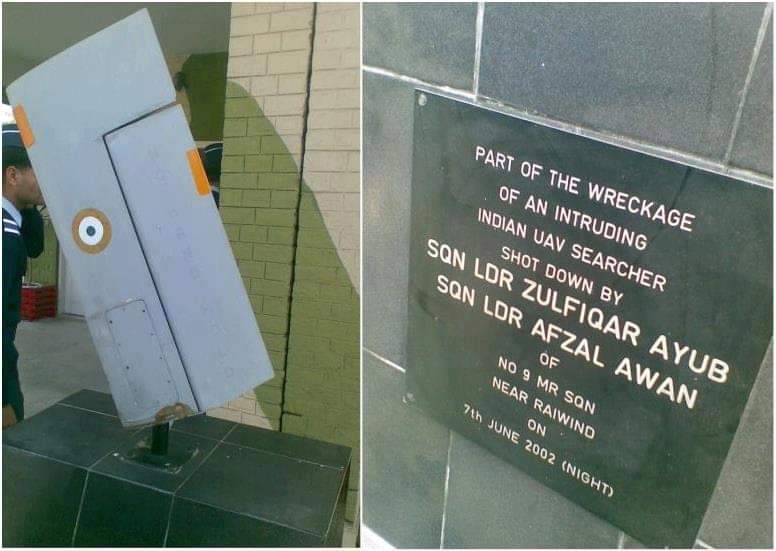In a recent training sortie mishap, an Israeli-manufactured Searcher remotely piloted aircraft (RPA) operated by the Indian Navy crashed in Kochi on March 18.
According to Navy officials, the incident, which occurred around 5 p.m. at the INS Garuda base, did not result in injuries or property damage.
The Navy issued a brief statement disclosing the details of the crash, indicating that the drone went down approximately one mile short of the runway during a routine training exercise. Responding to the incident, a specialized team was dispatched to the crash site to ensure the safety and security of the downed RPA.
The statement also confirmed that an inquiry has been initiated to investigate the circumstances leading to the crash. The Israeli-made Searcher drone, a vital component of the Indian Navy’s reconnaissance and surveillance capabilities, is utilized extensively for various operational purposes.
As the investigation progresses, authorities will seek to determine the root cause of the crash and implement necessary measures to prevent similar occurrences in the future.
At about 5 pm on March 18, one Remotely Piloted Aircraft (RPA)/ Searcher, during a routine training sortie at INS Garuda, Kochi, crashed about one mile short of the runway. No injuries or damage to property has been reported. Responding swiftly, a specialist team was dispatched… pic.twitter.com/oSDSQSOCnt
— ANI (@ANI) March 18, 2024
In 2002, Searcher Mk II of the Indian military garnered significant attention from Pakistani media when reports surfaced of a Pakistani Air Force (PAF) fighter jet shooting down an Indian unmanned aerial vehicle (UAV) near Kasur along the Line of Control (LoC).
In June 2002, a Searcher Mark-II, operated by the Indian Air Force for reconnaissance purposes, was targeted and brought down by a Pakistan Air Force F-16B using an AIM-9L Sidewinder missile at an altitude of 13,000 feet, following its detection by mobile observation units.
At the time of the incident, then Pakistan’s Chief of the Air Staff, Air Chief Marshal Mushaff Ali Mir, alleged direct assistance from Israel to India for gathering intelligence on Pakistan. He suggested that evidence indicated the hurried induction of the UAV in the preceding months.
Pakistani officials estimated the value of the downed Searcher Mark-II at US$1.5 million, with its avionics component valued at 0.7 million.

Pakistan further contended that India’s use of UAV surveillance posed a threat by potentially enhancing the accuracy of enemy artillery through the real-time transmission of images to its base and satellite systems, facilitating the assessment and adjustment of artillery fire.
During this period, then Pakistan’s top military spokesperson, Major General Rashid Qureshi, asserted that the loss of the aircraft by India was a significant blow and should serve as a reminder to Indian leadership of the capability of the Pakistani armed forces to counter any aggression.
Israeli-Made Searcher Drone
The Searcher, initially deployed in 1992 by IAI, saw an evolution with the introduction of the Searcher Mk II in 1998, which India later acquired post-2000.
Described as a versatile UAV system by Israeli Weapons, an online repository specializing in Israeli Defence Forces’ armaments, the Searcher Mk II boasts dimensions of 5.85 meters in length and an 8.55-meter wingspan, with an endurance of up to 18 hours.
Its operational parameters include a range of 300 kilometers and an altitude ceiling of 20,000 feet. The Indian Air Force currently utilizes approximately 180 Israeli-manufactured UAVs, comprising 108 Searchers and 68 Heron 1s for surveillance and reconnaissance, alongside a fleet of Harpy UAVs designed for precision strikes against radar installations with their self-destruct capabilities.
The Searcher Mk II is designed for a myriad of missions, including surveillance, reconnaissance, target acquisition, artillery adjustment, and damage assessment.
This UAV system boasts several key features and capabilities tailored to meet diverse operational requirements. It offers multiple operational configurations and is equipped with Synthetic Aperture Radar (SAR)/Ground Moving Target Indicator (GMTI), signal intelligence (SIGINT), and Electro-Optical/Infrared (EO/IR) capabilities.
Furthermore, its low-noise integrated 4-stroke engine ensures minimal audio detection, while its construction from composite materials serves to reduce radar detection, enhancing its stealth capabilities.
The Searcher Mk II exhibits resilience in adverse weather conditions, making it a reliable asset even in challenging environments. Its operation is characterized by safety, reliability, and ease, facilitated by two simultaneous Automatic Takeoff and Landing (ATOL) systems for maximal safety and fully redundant, state-of-the-art avionics.
In terms of payloads, the Searcher Mk II offers a range of options, including Electro-Optical (EO) sensors such as TV and IR combinations or triple-sensor TV/IR/Laser Designator (LD), Synthetic Aperture Radar (SAR), and integration capabilities for Communication Intelligence (COMINT) and Electronic Support Measures (ESM). Additionally, it supports customer-furnished payloads to accommodate specific mission requirements.
The Searcher Mk II’s data link capabilities are equally impressive. It features a Direct Line-of-Sight (LOS) data link for immediate communication needs, a UAV airborne data relay for missions beyond LOS, and a ground-based data relay for extended-range missions, ensuring seamless connectivity and information transfer during operations.
- Contact the author at ashishmichel(at)gmail.com
- Follow EurAsian Times on Google News